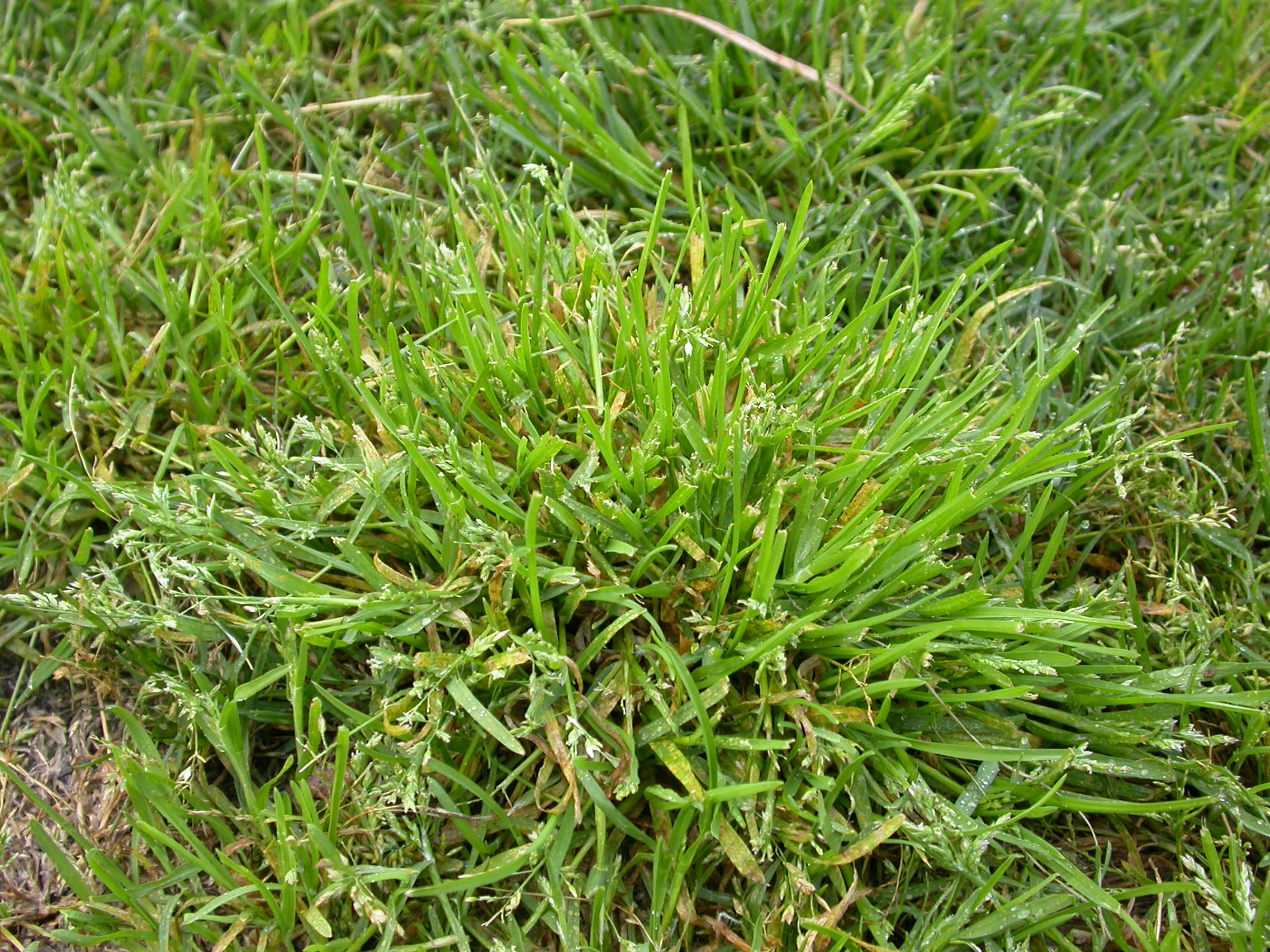Wintergrass
Introduction
Scientifically known as ‘Poa annua’, this grassy weed is commonly called Poa, wintergrass or annual bluegrass. A commercially significant weed of cool climate golf greens, the light green leaves of ‘Poa annua’ often cause an unsightly contrast to the dark green leaves of the turf species they invade. It can also significantly change the surface characteristics of sports turf surface by weakening the desired species (competing heavily for light, water and nutrients) and by changing performance characteristics such as ball roll, traction and physical appearance.

Description
‘Poa annua’ is fast growing in comparison to other turf species, therefore the lime green foliage, and inflorescence if developed, will generally stand taller and provide a contrasting colour to the desired turf canopy.
A member of the Poaceae family, ‘Poa annua’ can have either a tufted or creeping growth habit as it is an extremely diverse grass species. There are commonly two forms of ‘Poa annua’, which include an annual type (normally tufted) and a perennial genotype (mostly prostrate). The perennial type can be categorized as, (i) a short lived perennial referred to as a “turf-type”, and (ii) a long-lived perennial that thrives under the extremely close mowing heights of golf greens, referred to as “greens-type”. The variation present within the species allows herbicide resistance and a high degree of regenerative potential.
Culms (stems) of the ‘Poa annua’ plant can be up to 30cm if left unmown. The soft, narrowly linear, flat, smooth leaves are up to 3.5 mm wide. Foliage is often lime green in colour for the annual types and darker green in colour for the perennial. Commonly ‘Poa annua’ can produce multiple to several inflorescence (panicles), which can grow up to 7 cm if left unmown. Perennial types produce fewer inflorescences and form patches from short stolons. Spikelets of the inflorescence are up to 5.5 mm are closely spaced with 3-7 flowers.
Poa annua is a widespread environmental weed that thrives in temperate to sub temperate climates, but can extend well beyond these limits to be a problem in tropical managed turfs.
Lifecycle
Both annual and perennial forms of ‘Poa annua’ reproduce by seed, while perennial types can spread by short stolons. The annual type can complete its lifecycle in approximately 2 months. However, during this short period, commercially significant damage can occur if seed is able to germinate freely. It has been estimated that annual Poa seed densities are commonly 200,000 per square metre in infested lawns. Seed head (inflorescence) emerges after a growing point changes from the vegetative to the reproductive state. Subsequent elongation of the flowering stem (culm) elevates the inflorescence so that developing seed can disperse and provide new plants when conditions for germination and seedling growth are favourable.
Download PDF